
Copyright 2012 Prufrock Press Inc.
Edited by Jennifer Robins
Cover and layout design by Raquel Trevino
ISBN-13: 978-1-61821-003-6
No part of this book may be reproduced, translated, stored in a retrieval system, or transmitted, in any form or by any means, electronic, mechanical, photocopying, microfilming, recording, or otherwise, without written permission from the publisher.
At the time of this books publication, all facts and figures cited are the most current available. All telephone numbers, addresses, and website URLs are accurate and active. All publications, organizations, websites, and other resources exist as described in the book, and all have been verified. The author(s) and Prufrock Press Inc. make no warranty or guarantee concerning the information and materials given out by organizations or content found at websites, and we are not responsible for any changes that occur after this books publication. If you find an error, please contact Prufrock Press Inc.

Prufrock Press Inc.
P.O. Box 8813
Waco, TX 76714-8813
Phone: (800) 998-2208
Fax: (800) 240-0333
http://www.prufrock.com
Introduction
In order to meet the cognitive, social, and emotional needs of gifted students, districts need to continually assess their gifted education programs to look for areas of strength, various challenges, and potential recommendations for improvement. Best practices in gifted education advise that programs and services for gifted students undergo formal evaluation by outside experts in the field approximately every 5 years (Landrum, Callahan, & Shaklee, 2001). However, when districts are faced with significant budget challenges, many simply cannot afford to hire an outside consultant to conduct such an evaluation. Consequently, programs for gifted students may go without a program review for an extended period of time resultingat bestin stagnant achievement andat worsein a decline in the quality of experiences for and achievement of their gifted students.
Although our personal professional beliefs align with the recommendation to conduct a formal, external program evaluation approximately every 5 years, we also sympathize with the financial realities of school districts. When faced with limited resources, the solution to this problem is not for districts to forgo program evaluation. Regardless of financial constraints, districts still need to determine the extent to which the stated purposes and goals for their gifted program are being put into practice. An interim solution may be for districts to conduct their own in-house program evaluation.
We recognize that many school personnel will find the process of conducting an in-house evaluation daunting. Busy professionals with limited time to study the process may not know how to begin, how to collect and analyze the data, or how to report their findings. This guide is designed to assuage these concerns by walking districts through the entire process of conducting their own internal evaluation of their gifted program.
There are two main types and purposes of evaluation: formative and summative. Formative evaluation is designed to determine strengths and weaknesses for the purpose of program improvement; summative evaluation is designed to make judgments about a program for the purposes of decision making related to a programs continuation. This book is intended for local program personnel who are seeking guidance in evaluating their gifted program for improvement (i.e., formative evaluation).
Although programs vary across states and districts, the principles of good program evaluation are the same regardless of the areas of giftedness being identified and served. The examples in this book focus on the areas of general intellectual giftedness and on giftedness in specific academic domains, as schools most often serve these areas. Other domains may include leadership, creativity, and the arts. The process, the examples, and the tools provided within this resource can be modified to include other areas of giftedness for those with broader program definitions, goals, and services.
This guide addresses gifted programming from a comprehensive perspective because research has shown that the greatest achievement gains are found from programs that address multiple dimensions such as providing daily challenge, offering opportunities for independent study, accelerating students, working with like-ability peers, and differentiating in pace, review time, and organization of content (Rogers, 2007). The reader should note, however, that many gifted programs are not designed to be comprehensive in their structure or goals but rather focus on only one dimension of programming such as acceleration or enrichment. These programs should be evaluated according to the extent to which they are meeting their established purpose and should not be measured against criteria for which they were not designed to address. Personnel who are evaluating such programs will want to select from each chapter of this book the relevant data sources, guiding evaluation questions, survey items, and interview prompts/questions that correspond to the purpose of their programs. When considering their recommendations, however, reviewers may want to keep in mind that the greatest achievement gains are found in programs that include the five areas referenced above and make suggestions accordingly.
This guide also references the National Association for Gifted Children (NAGC, 2010a) Pre-KGrade 12 Gifted Programming Standards. These standards integrate what are considered best practices in gifted education and the teacher preparation standards developed jointly by NAGC and the Council for Exceptional Childrens The Association for the Gifted (CEC-TAG) division. These programming standards are referenced in each chapter, and the full elaboration of the student outcomes and evidence-based practices can be found in .
offers helpful suggestions on how to set up an internal evaluation and provides an overview of what the process will entail. The process of assessing each of the six core elements of a gifted programprogram design, the identification process, curriculum and instruction, the affective dimension (counseling and guidance), professional development, and program effectivenessis covered in each of the subsequent chapters. For each core program element, the chapter contains:
 a description of the core program element and its purpose in the education of gifted students;
a description of the core program element and its purpose in the education of gifted students;
 the relevant NAGC Gifted Education Programming Standard that is addressed in the chapter;
the relevant NAGC Gifted Education Programming Standard that is addressed in the chapter;
 a description of best practices;
a description of best practices;
 a list of guiding evaluation questions and suggested corresponding data sources to answer the questions; and
a list of guiding evaluation questions and suggested corresponding data sources to answer the questions; and
 sample survey items, interview prompts/questions, checklists, forms, and/or instruments for evaluating the program element.
sample survey items, interview prompts/questions, checklists, forms, and/or instruments for evaluating the program element.
The book also includes appendices with reproducible worksheets, surveys, and resources to facilitate the completion of the internal evaluation. These documents are also included online at http://www.prufrock.com/Assets/ClientPages/gifted_program_evaluation.aspx to allow districts to customize them for their particular needs. Although we know that an internal evaluation will not entirely replace the need for an external review by experts in the field of gifted education, the careful self-monitoring that results from the internal review will undoubtedly strengthen the program in the interim, thereby more effectively meeting the needs of the districts gifted students.
Next page
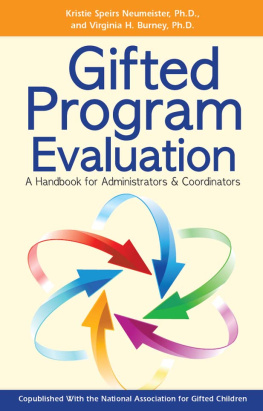

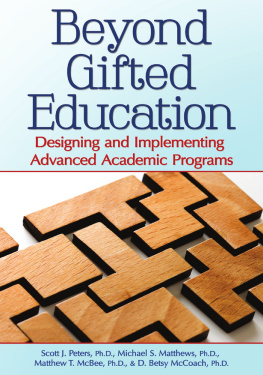
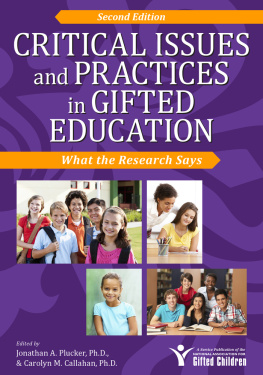

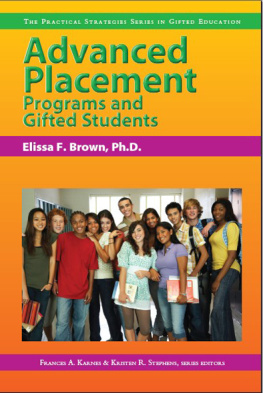
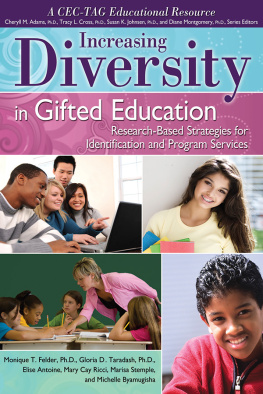

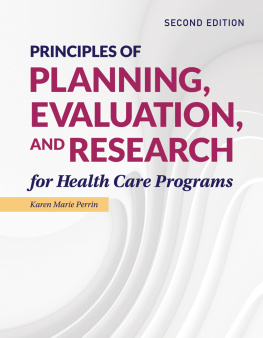
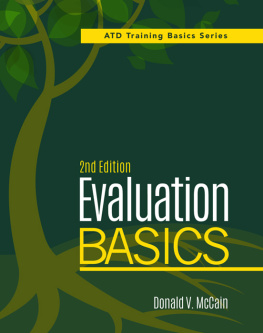
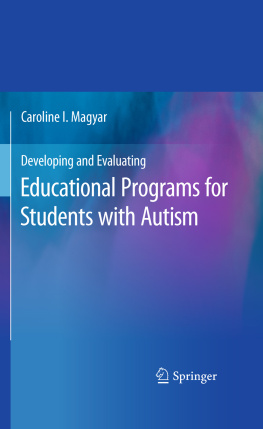


 a description of the core program element and its purpose in the education of gifted students;
a description of the core program element and its purpose in the education of gifted students;